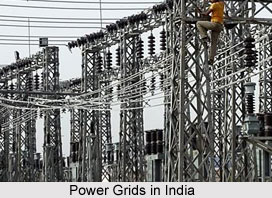 The power generated from every possible source is fed into five regional grids. All the regional grids are expected to be connected into a single national grid to serve all the regions better even in adverse conditions.
The power generated from every possible source is fed into five regional grids. All the regional grids are expected to be connected into a single national grid to serve all the regions better even in adverse conditions.
Centralised distribution system, however, has its demerits, too. It calls for huge expenditure on setting up infrastructure and problems of management. The system works well where service and efficiency are the watchwords. There is now a trend to move towards decentralisation. It would provide greater initiative to local people who can assess their needs and resources and plan a strategy that suits them best. Cost effectiveness becomes an immediate concern and hence wastages can be kept to the minimum in the interest of consumers themselves. The most important advantage of this system, however, has been the use of renewable and inexhaustible sources of energy.



















